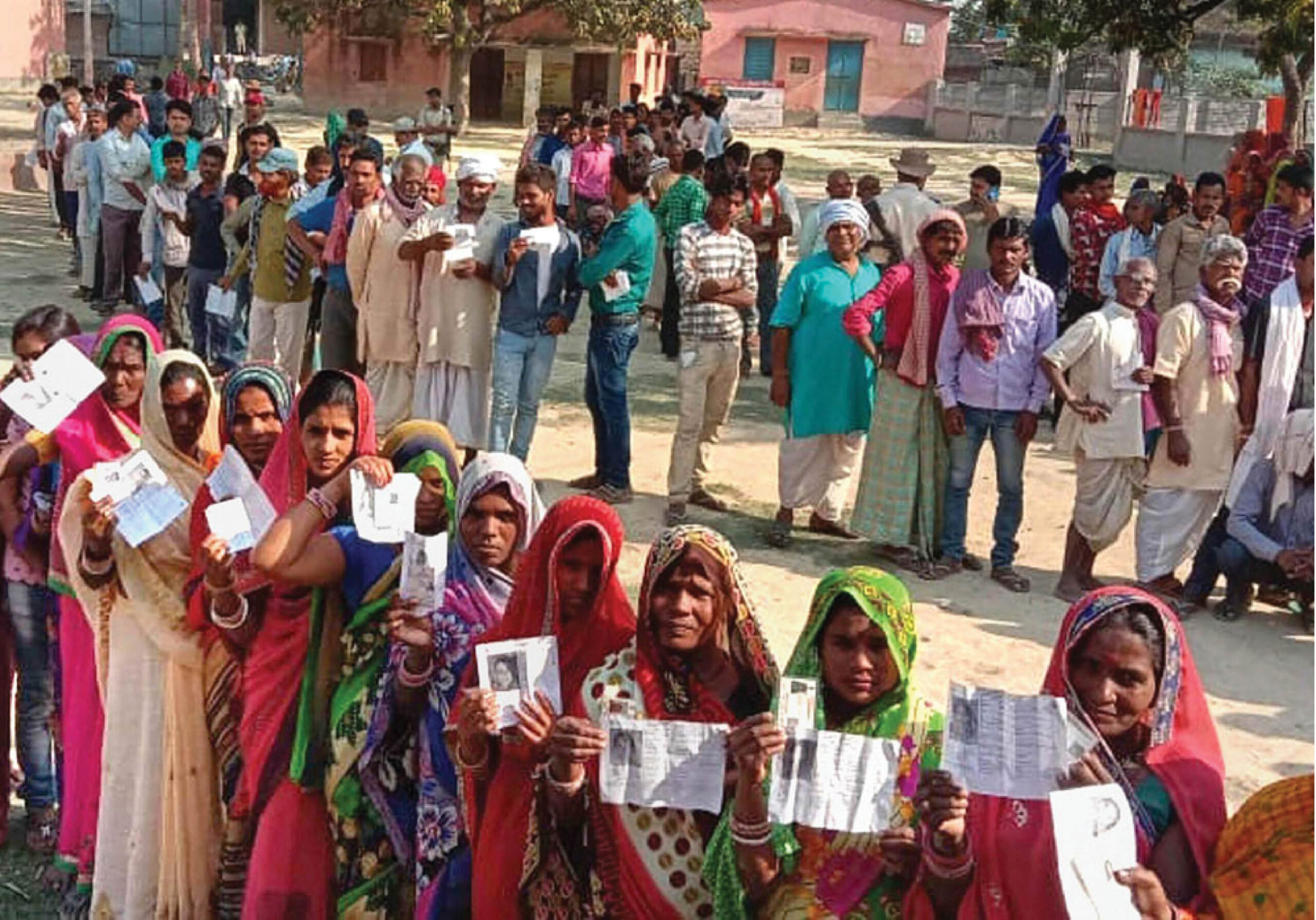Changing public aspirations and developmental desire of the people are key factors
There is a dominant view among public, politicians, academicians and media that Indian election is all about managing the caste. This political management of caste is being named as social engineering in contemporary discourse.
This is election time in the country. These days terms like caste equations and social engineering are frequently being used during discussions on election. But these terms are mostly used by journalist, academics and political class. The people at the grass root hardly use such terms in their everyday use while discussing politics and elections. Most of the people either talk abut Neta(leaders), political parties or about the welfare schemes.
The caste is half truth either in social life or in politics. It works more as perceptions than reality. When I am submitting it’s more perception’ than reality, I want to say that caste may or may not work as main influential factor in many cases during elections. The popularity of the leaders, success of programmes and policies which work for broader public, dilute rigidity of caste during elections many times.
The popularity as a term and process itself use to minimise any kind of rigid caste or community identity. The very popular leaders like Mahatma Gandhi, Jawahar Lal Nehru, Indira Gandhi, Narendra Modi emerge through making caste irrelevant in politics. They emerge leaders of large section of society, beyond the caste and community. Leaders like Nehru who belonged from Kashmiri brahmin family, in fact a minority, PM Modi who belongs from a family of Gujarati non dominant other backward caste, emerged as iconic leader and largely accepted by people of various castes, communities and regions.
It is interesting to observe that caste sustains in society and politics not through its rigidity but its flexibility. Due to its social flexibility, caste in politics and especially during elections forms alliance with other caste very easily and comfortably on many occasions.
Since election in democracy is determined by numbers, so every caste asserts its numerical power and includes its sub-castes to whom they use to keep distance in the social life. So, politics of democracy in one way keep promoting flexibility and dilute various kinds of caste-based rigidity while forming and reforming electoral groups during elections.
These realignment among caste and social groups in politics and election slowly evolves bhayichara among various caste groups based on political requirements and readjustment. But also, in this process, some dominant caste groups emerge as dominant by including small sub-castes of their own’ caste family’.
In this process, slowly these small subcastes also acquire political visibility and democratic value. Around two decades ago, when we use to go to the field, we use to hear various sub-castes of yadavas, but now its rare to listen such sub-caste based division while discussing politics in rural hamlets of North India.
To assert numbers, the leading section of these communities included their own sub-castes politically and that produced a political homogenisation of various sub castes of respective dominant castes. This process earlier started among upper castes and slowly transmitted to the dominant OBC communities.
Like Yadava, this process also started among the communities like Kurmi, Kushwaha, Nishad, etc. in Northern part of India. But interestingly in initial phases of such homogenisation, the share in political representation largely remained centralised among numerically dominant sub castes of the respective caste. Slowly it trickled down to the smaller subcastes also.
The caste who gets socio-economic mobility, consequently, acquires capacity to aspire for their share in political power undergoes through the process of political homogenisation because that caste or social group need to claim for higher numerical strength. To increase its number, the caste includes its subcastes, who were differentiated on certain historical juncture- based on various occupation. The claim of various castes in many parts of India about their numbers today which we listen in deliberations of the leaders in these castes or social groups are basically emerged from this democracy produced phenomenon of political homogenisation. Most of these numbers of castes and communities which we hear have no concrete factual basis, they are also evolved either on assumption-based calculation or perceptional counting. Since we don’t have caste-based census in India, that is why these calculations contains huge speculative elements.
In the planning and management of parliamentary election 2024 these caste calculations play crucial role. These numbers and calculations have influenced the ticket distributions of various political parties in big way. The Congress and I.N.D.I. alliance have made caste as central discourse in this election, but they miss the fact that caste is half reality of Indian politics. Half-truth in both ways –in terms of its structure as well as functions.
That is why political forces who rely heavily on caste mobilisation in politics, most of the time fail in getting favourable results in politics of elections. The caste combining with other factors such as changing public aspirations and developmental desire of the people may help in effective mobilisation in democratic electoral politics in India.









